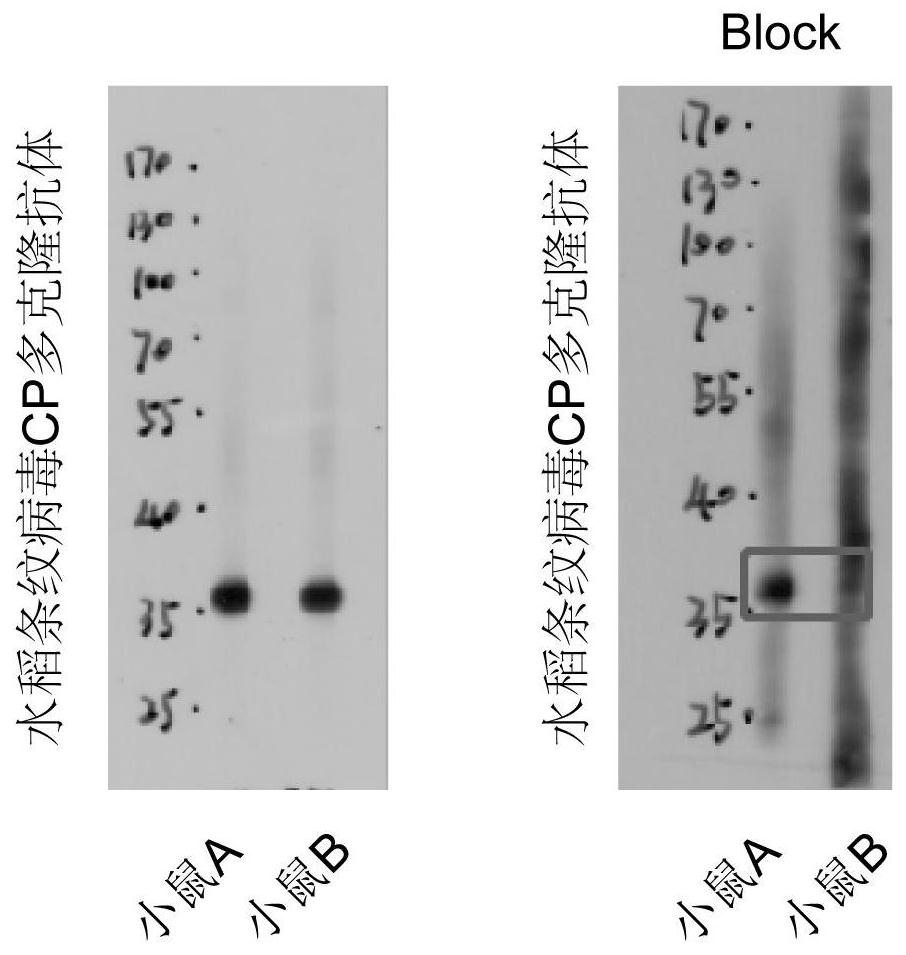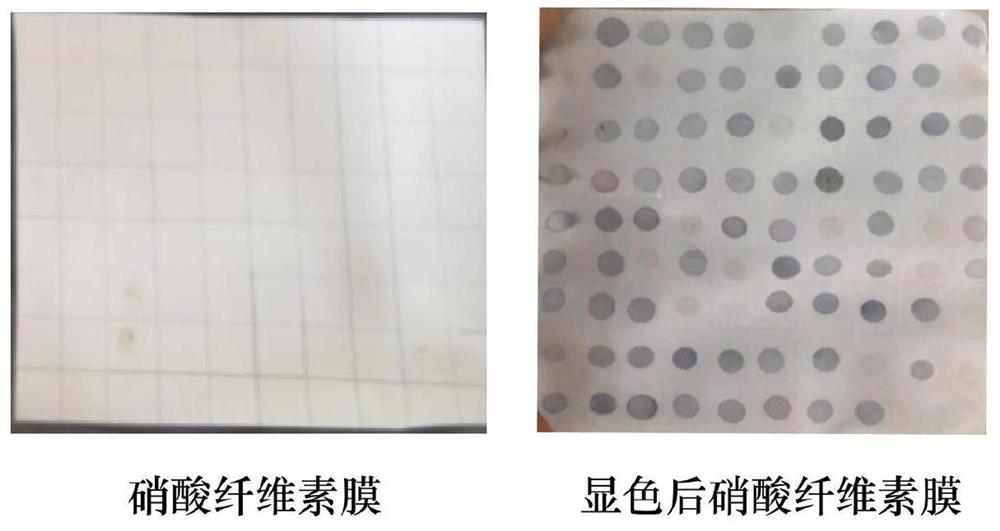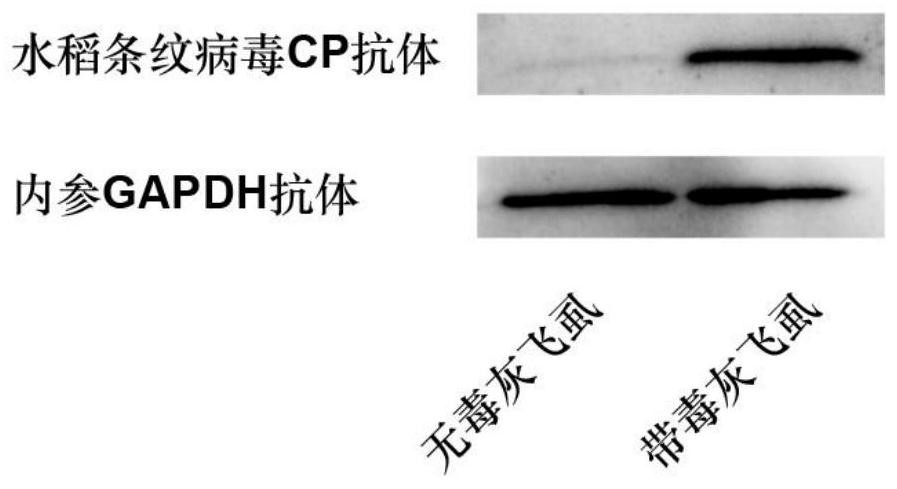A kind of polyclonal antibody of rice stripe virus nucleocapsid protein and its preparation method and application
A rice streak virus, nucleocapsid protein technology, applied in antiviral immunoglobulin, virus/phage, microorganism-based methods, etc. stability and other issues to achieve the effect of facilitating disease monitoring
- Summary
- Abstract
- Description
- Claims
- Application Information
AI Technical Summary
Problems solved by technology
Method used
Image
Examples
preparation example Construction
[0028] In the present invention, the preferred method for preparing the recombinant vector comprises the following steps: 1. Total RNA planthopper) Rice stripe virus extracted with reverse transcription to obtain cDNA; 2) to said cDNA as a template for PCR amplification by obtaining the gene fragment encoding the CP; 3) to obtain the transformed E. coli CP / pMD-19T connects the plasmids and gene fragments pMD-19T vector; 4) the CP / pMD-19T double-digested plasmid recovered CP gene fragment encoding the vector pET-28a is connected to the obtained recombinant vector.
[0029] In the present invention, total RNA was extracted with planthopper rice stripe virus, reverse transcription to obtain cDNA. In the present invention, the total RNA was extracted using TRIzol preferred method, in a particular embodiment of the process of the present invention, preferably performed using a kit, said kit preferably TRIzol TM LS Reagent, 10296010, ThermoFisher, USA; see specific steps to kit inst...
Embodiment 1
[0046] Construction of CP / PET-28A prokaryotic expression vector:
[0047] Sequence amplification of rice striped virus CP: Trizol Method (Trizol TM LS Reagent, 10296010, Thermofisher, USA) Extract the total RNA of poisonous gray-prolad trend; to extract the total RNA for the template to reverse the cDNA; reverse transcription adopts TAKARA anti-transcription kit, operation See Kit Manual .
[0048] PCR amplification was performed by cDNA to obtain a CP gene.
[0049] Special primers in PCR amplification:
[0050] CP-BAMHI-R: taggatccctagtcatctgc (SEQ ID No.3);
[0051] CP-NOCI-F: taccatgatgtgggctatgt (SEQ ID No.4).
[0052] The PCR amplification system is shown in Table 1.
[0053] Table 1 PCR amplification system
[0054]
[0055] PCR amplification procedure:
[0056] (1) Pre-deformation of 94 ° C for 3 min;
[0057] (2) 94 ° C denaturation 30s, 56 ° C annealing 30s, 72 ° C extension 1min, 45 cycles;
[0058] (3) Extension at 72 ° C for 10 min.
[0059] The PCR product was co...
Embodiment 2
[0064] CP / pET-28a plasmid construct: Solution I is connected with the CP pMD-19T vector fragment recovered in Example 1 molar ratio of enzyme to embodiment 3: 1,16 ℃, 30min connection. The ligation product was transformed into E. coli by heat shock method, using a sieve resistance and positive colonies were blue-white screening. After sequencing at -20 ℃ CP / pMD-19T plasmid.
[0065] (15U / μl) and NcoI (15U / μl) enzyme double digestion method CP / pMD-19T BamHI digested according to the respective plus 1μl 50μl system, the fragment Gel Extraction according to the vector pET-28a 3: 1,16 ℃, 30min connection. Transformation of E. coli positive clones and sequencing, is obtained CP / pET-28a prokaryotic expression vector.
[0066] CP fusion protein prokaryotic expression:
[0067] (1) CP / pET-28a transformed E. coli culture: The recombinant plasmid CP / pET-28a Rosetta transformed into E. coli competent cells, 37 ℃, 220rpm overnight. 1: 100 dilution into the culture medium Kanam...
PUM
 Login to View More
Login to View More Abstract
Description
Claims
Application Information
 Login to View More
Login to View More - R&D
- Intellectual Property
- Life Sciences
- Materials
- Tech Scout
- Unparalleled Data Quality
- Higher Quality Content
- 60% Fewer Hallucinations
Browse by: Latest US Patents, China's latest patents, Technical Efficacy Thesaurus, Application Domain, Technology Topic, Popular Technical Reports.
© 2025 PatSnap. All rights reserved.Legal|Privacy policy|Modern Slavery Act Transparency Statement|Sitemap|About US| Contact US: help@patsnap.com



